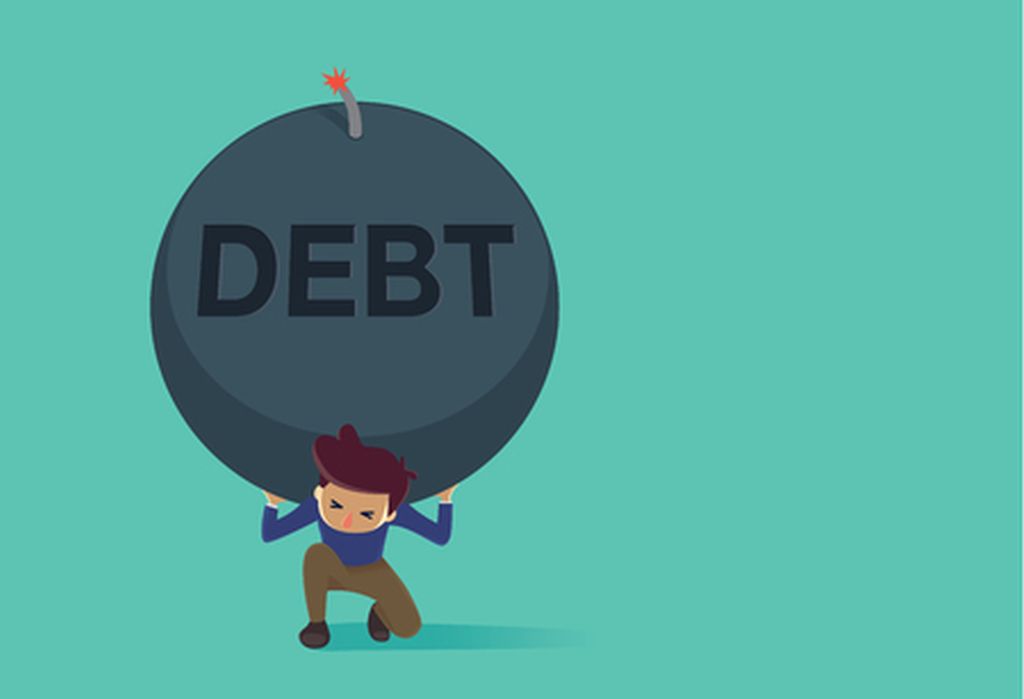The average US family owes $15,675 in credit card debt. An increasing number of Americans, many of which millennials are facing the unbearable burden of owing money. Hence, I would like to share some ideas on how to handle your credit card debt better. Whether you have maxed out on credit cards or planning to take on credit card debt, you may find the following steps critical in becoming debt-free.
1. Know your credit score
As a first step, you need to understand your credit score, also known as FICO. The FICO score is a measure between 300 and 850 points. Higher scores indicate lower credit risk. Each of the three national credit bureaus, Equifax, Experian, and TransUnion, provides an individual FICO score. All three companies have a proprietary database, methodology, and scoring system. Many times you may find small or even substantial differences in your credit score issued by those agencies.
Your FICO score is a sum of 64 different measurements. And each agency calculates it slightly differently. As a general rule, your credit score depends mainly on the actual dollar amount of your debt, the debt to credit ratio, and your payment history. Being late on or missing your credit card payments, maximizing your credit limits, and applying for too many cards at once will hurt your credit score.
The good news is that you can get your score for free from each of the three agencies once a year. Additionally, many credit cards include the value of your credit score for free.
Keep in mind that the FICO score provided by your credit card will come from one of these three agencies. So if you have a second credit card from a different bank that also offers a free FICO score, it might be using a different agency, and the score most likely will be different.
2. Know the interest on your credit card
When you apply for a credit card, you should always verify the interest rate if you don’t pay off your dues at the end of the month. This interest rate can also change over time, and your credit card provider is required to notify you. However, the chance of you not paying attention to the mail notification is pretty high. If you are not sure, call your bank and verify it with them.
3, Know the due dates on your credit card
Make sure you know when your credit card monthly payments are due. Forgetting to pay the monthly minimum on time can cause you a lot of grief, high penalties, and a significant amount of time on the phone with your credit card provider. Most reputable banks will waive the penalty if this is your first late payment. However, doing it more than once will raise a big red flag in your relationship with them. At a very minimum, you can set up an automatic payment for the minimum amount due each month.
4. Set-up a budget
Before taking any further steps in managing your credit card debt, you need to have a balanced budget. To begin, make sure you know all your monthly income and paydays. List all your expenses in broad categories. If you spend more than you earn, you may have to decrease your discretionary costs until you balance out your budget. As a rule of thumb, try to leave 10-15% of your income aside for emergencies and unexpected expenses.
5. Open a savings account
In your pursuit of financial independence, one crucial step is opening a savings account. Most major banks will give you an extremely low, close to 0% saving rate. However, some of the online lenders like Discover Bank, Capital One, Ally Bank, and Synchrony Bank offer rates around 1%. Bankrate.com is an excellent source of various savings account options.
6. Consolidate your credit card debt
Consolidating credit card debt is most effective when it’s a part of your bigger financial strategy.
If you decide to continue on that route, pay very close attention to the fine print in your card offers. A lot of times, the small print will contain critical information about interest rates, promotional periods, credit limits, due dates, and penalties. Some banks offer credit cards with a promotional 0% rate for a specified period. Other banks will try to entice you with cashback or other rewards programs.
If you decide to transfer your debt, be aware that banks often charge upfront 3% to 5% fee on the transfer amount. In that case, you will have to do the math to see if it’s worth making the switch.
Also, keep in mind that opening too many credit cards can abruptly impact your credit score. The general rule is opening one credit card per 3 months.
Once you pay off a credit card, put it aside. Lock it away and keep it open. Closing a credit card lowers the amount of available credit and decreases your credit score.
7. Look for alternatives
Two of the main alternative options are taking a personal loan from local credit unions and a home equity line of credit if you own a house. A lot of times, local credit unions and banks can give you a much lower rate and will work with you to pay off your debt.
Conclusion
Having a solid plan where you monitor your monthly income and expenses is the best path to financial independence and debt free life. Be responsible with your finances and stay on top of your credit cards and loans. Many times you can do it on your own or ask a friend or a family member for help.



